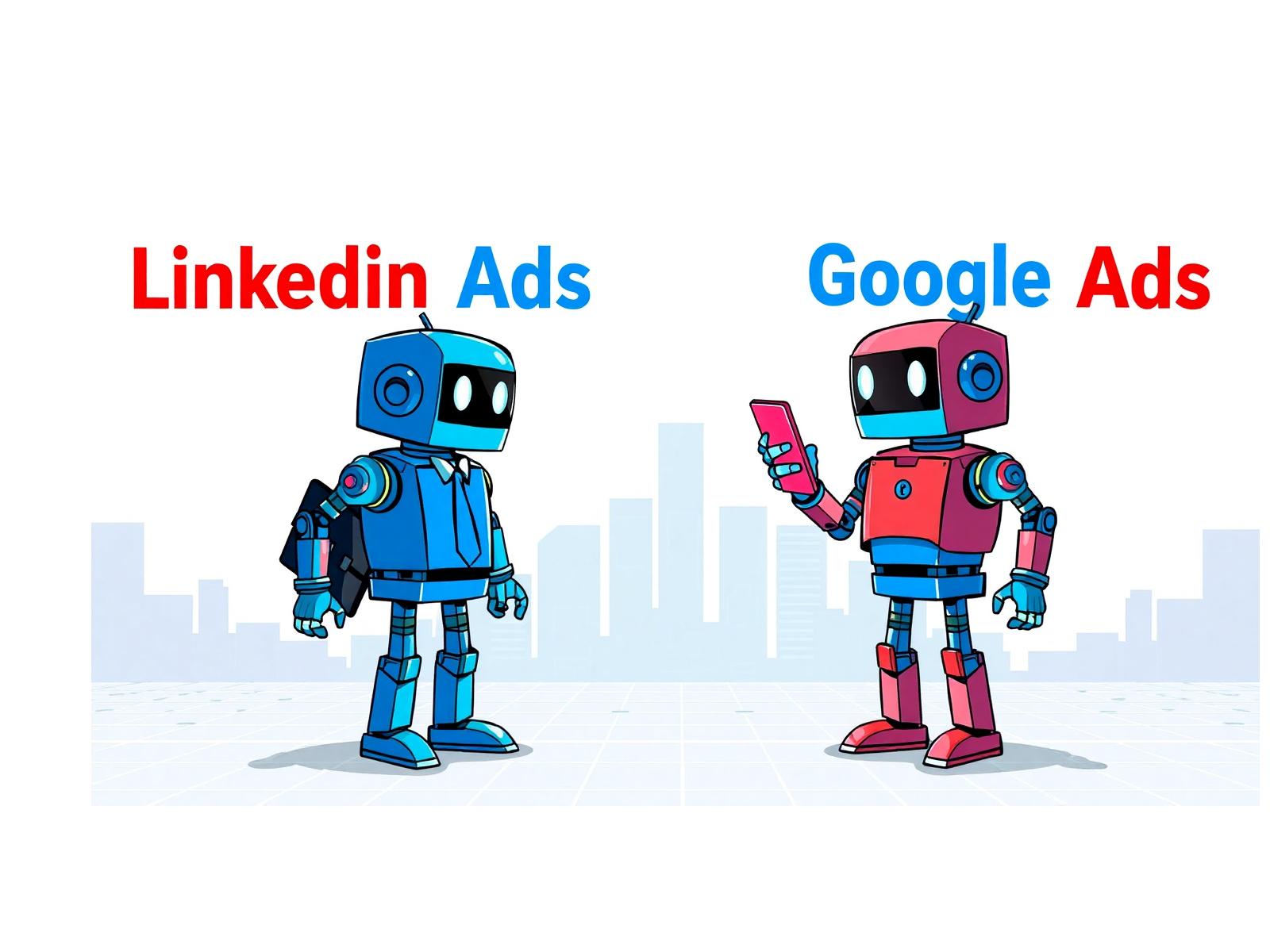
The customer journey no longer belongs to just one person

How conversational AI is changing the economics of paid search

How duplicate content reduces brand visibility in AI Search

6 minutes
Google Ads helps to “capture” existing demand, while LinkedIn Ads makes it possible to “create” new demand among the target audience. This difference is key for B2B marketers, as the effectiveness of the advertising strategy and the return on investment depend on understanding the role of each channel.
In the case of Google Ads, we work with people who are already aware of their problem and are actively looking for a solution. They enter queries that signal a high purchase intent, and the brand’s task is to appear at this moment and offer the most relevant solution. This is a quick path to conversions, but it only works when the product category is mature and has an established search terminology.
LinkedIn Ads, on the other hand, allows you to reach potential clients before they start searching. Here we work with the audience based on professional characteristics — job title, industry, seniority level, or company size. This opens opportunities for demand generation: to explain the problem, introduce a new solution, build trust, and lay the groundwork for further actions.
That’s why it’s important to understand how Google Ads and LinkedIn Ads work at different stages of the sales funnel: from building awareness and trust to capturing high-intent leads. When these channels are properly integrated into the strategy, they reinforce each other and help B2B companies achieve the maximum return from paid media.
In this case, there is already knowledge about the product or service on the market, as well as established interest. These are usually more mature solutions with a clear vocabulary of search queries.
Clients already know whether they need the product and deliberately search for it. That is why Google Search campaigns work well for businesses that offer:
If the audience knows how to formulate their query and is already in the process of making a choice, Google Search ads are the perfect channel for lead acquisition.
When a product is new to the market, there often isn’t a clear vocabulary of queries yet. The audience may not even realize they have a problem that your solution helps solve.
In this case, it’s important not to wait until the client comes by themselves, but to reach out to them with a clear message. LinkedIn Ads performs this task best thanks to precise targeting based on professional and corporate attributes:
LinkedIn Ads allows you to “create” demand by educating the audience, increasing their awareness, and generating interest in your product or service.
Many B2B companies don’t take into account that if no one knows what exactly to search for, Google campaigns won’t bring results.
In market entry scenarios, the following is often observed:
In such cases, it’s worth focusing on LinkedIn Ads or other channels for demand generation, to build awareness and create demand.
However, Google should not be completely disregarded. Useful tools may include:
Instead of focusing exclusively on the top, middle, or bottom of the funnel, more and more B2B teams are moving to a “full-experience” approach. This involves coordinated campaigns at every stage of the buyer’s journey with a clear purpose.
Each campaign must play its role in growing the pipeline and strengthening brand trust. The structure usually looks like this:
Awareness and trust
Channels: LinkedIn Ads, Google Display, Google Demand Gen.
Goal: introduce the brand, highlight key problems and solutions, build expertise through educational content.
Trust and consideration
Channels: LinkedIn Ads, Google Ads retargeting.
Goal: re-engage the warm audience, promote guides, case studies, resources for deeper interaction, and build interest.
Conversion and demand capture
Channels: Google Search, LinkedIn Ads.
Goal: attract high-intent users through key queries, competitor campaigns, and clear calls-to-action; on LinkedIn — work with a qualified audience through “stronger” offers.
This approach ensures that no campaign is disconnected from the overall strategy, and every dollar of the budget works towards a holistic result.
In most cases, the right decision for B2B is not “Google Ads or LinkedIn Ads” but the combination of both channels.
Learn more about how to create AI ad copy for Google Ads.
They don’t compete but complement each other: Google helps capture existing demand, while LinkedIn helps create new demand. That’s why the most effective strategies include both tools, but in different proportions depending on the business objectives.
Use Google Ads if:
Learn what to do when Google Ads performance declines.
Use LinkedIn Ads if:
Use both channels if:
No platform can fully “cover” all the needs of your B2B strategy. That’s why you should think not in terms of “Google or LinkedIn” but in terms of the full customer journey.
To set priorities, first put your client at the center:
The answers to these questions will help build a strategy where each channel works on its section of the customer journey. And only then will the advertising budget truly work as effectively as possible — not being scattered, but moving the audience step by step from interest to purchase.
Google Ads and LinkedIn Ads play different but complementary roles in the sales funnel: Google effectively captures already formed demand, while LinkedIn helps create it among the target audience. By using these tools together, companies can build a strong paid media strategy and achieve maximum results.
If you need help setting up or optimizing Google Ads or LinkedIn Ads, our team is ready to take care of it and ensure the effectiveness of your campaigns.
Read this article in Ukrainian.
Say hello to us!
A leading global agency in Clutch's top-15, we've been mastering the digital space since 2004. With 9000+ projects delivered in 65 countries, our expertise is unparalleled.
Let's conquer challenges together!
performance_marketing_engineers/
performance_marketing_engineers/
performance_marketing_engineers/
performance_marketing_engineers/
performance_marketing_engineers/
performance_marketing_engineers/
performance_marketing_engineers/
performance_marketing_engineers/